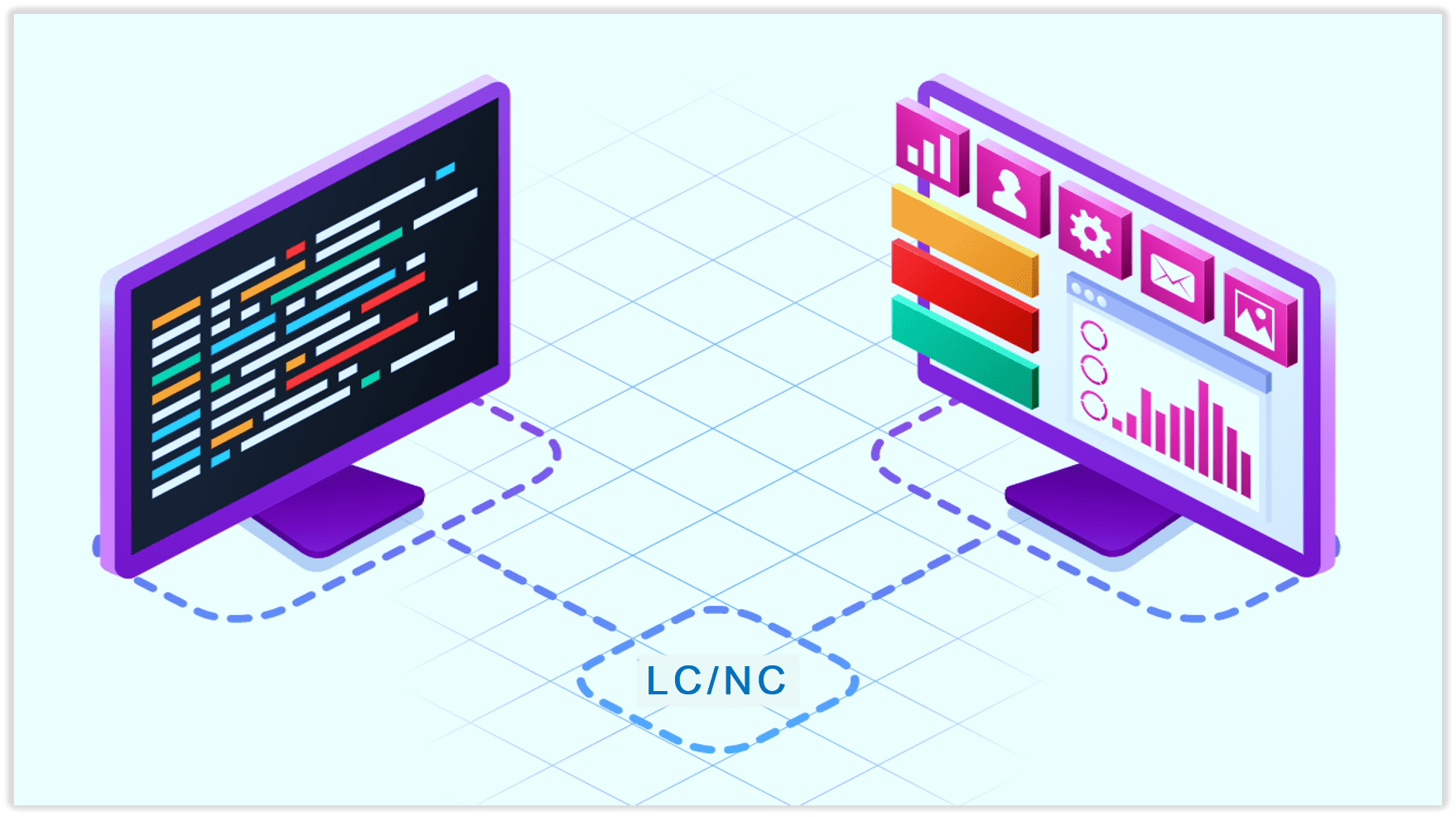

Empowering IT: The Low-Code and No-Code Breakthrough
Low-code and no-code (LCNC) application development, a remarkable approach to creating software, is transforming the way we build applications. Instead of relying solely on traditional developers who write complex code, this innovative method empowers users across various business domains to design and automate applications using user-friendly drag-and-drop tools.
We are going to discuss many more things regarding LCNC in the coming paragraphs. Therefore, you better read it till the end or you may miss something extraordinary today. STAY TUNED.
Before we go any further into it, let’s take you back to the emergence of LCNC, shall we?
The Emergence of Low-Code and No-Code
Traditionally, businesses had two choices for application development: purchasing off-the-shelf software or building custom applications from scratch using skilled developers. However, the landscape has evolved with the advent of LCNC development platforms, democratizing application development.
These LCNC platforms provide intuitive graphical interfaces that enable users to create applications and automate business processes without the need for extensive coding. This accessibility promotes innovation and eases the burden on IT departments. It’s a leap toward making application development accessible to all.
Diving into Low-Code Development
Low-code development simplifies application design and development by offering graphical tools and embedded functionalities. While some coding is involved, low-code streamlines the development process, allowing users to get started quickly.
Exploring No-Code Development
No-code development takes this a step further by enabling non-technical users to create applications without writing any code. It’s a user-friendly approach that empowers a broader audience to engage in application development.
Comparing Low-Code and No-Code


The key distinction between LCNC platforms lies in the level of coding knowledge required. Low-code platforms demand basic coding skills, while no-code platforms require no programming expertise. Many platforms offer a combination of both to cater to diverse skill sets within organizations.
The Rise of Citizen Developers
Empowering subject-area specialists as “citizen developers” allows businesses to leverage their unique insights. LCNC platforms facilitate collaboration between department leaders and IT professionals, leading to more efficient application development and faster responses to market demands.
How Low-Code and No-Code Tools Work
lCNC platforms are based on model-driven design, automatic code generation, and visual programming. They target users who understand their business processes, regardless of their coding expertise. These platforms simplify the development journey in several steps:
- Defining Needs and Outcomes: Identify the business needs, desired outcomes, and the problem the app aims to solve.
- Mapping Workflows: Use LCNC tools to specify processes and workflows within the application.
- Testing and Deployment: LCNC platforms handle the technical complexity, making it easier to evaluate and deploy the application.
Applications in Various Industries
LCNC platforms are witnessing rapid adoption across diverse industries. For example:
- Supply Chain: Overcoming challenges such as supply chain disruptions is made easier with responsive applications and automated workflows.
- Manufacturing: LCNC tools drive smart factories and enhance operations in manufacturing, integrating robotics and IoT networks.
- Accounting and Finance: Customized applications streamline workflows, making tasks like tax filing and financial management more efficient.
- Human Resources: LCNC empowers HR teams to customize job posts, automate hiring, and create training programs.
The Top 8 Benefits of LCNC Platforms
The growing adoption of LCNC platforms is driven by the array of benefits they offer:
- Ease of Use: Users can create applications without starting from scratch, focusing on fulfilling requirements.
- Faster Development: LCNC tools allow quick adjustments and integration of components, speeding up development.
- Increased Automation: Users can automate workflows and decision-making processes, improving efficiency.
- Lower Costs: Reduced time and maintenance costs result in significant savings.
- Simpler Data Integration: LCNC platforms simplify data integration, making it more flexible.
- Enhanced Agility: Fast development allows businesses to adapt to changing opportunities and compliance issues in real-time.
- Improved Customer Experience: Keeping applications responsive to customer feedback enhances loyalty.
- Privacy and Security: LCNC enables sensitive development tasks, minimizing security risks.
Final Words
Concluding the argument, we have reached a statement. “The future of application development is undoubtedly being reshaped by the power of low-code and no-code solutions, making it accessible to a wider audience and driving innovation across industries.” We hope that our readers will go home with a firm understanding of LCNC today.


Leave a Reply